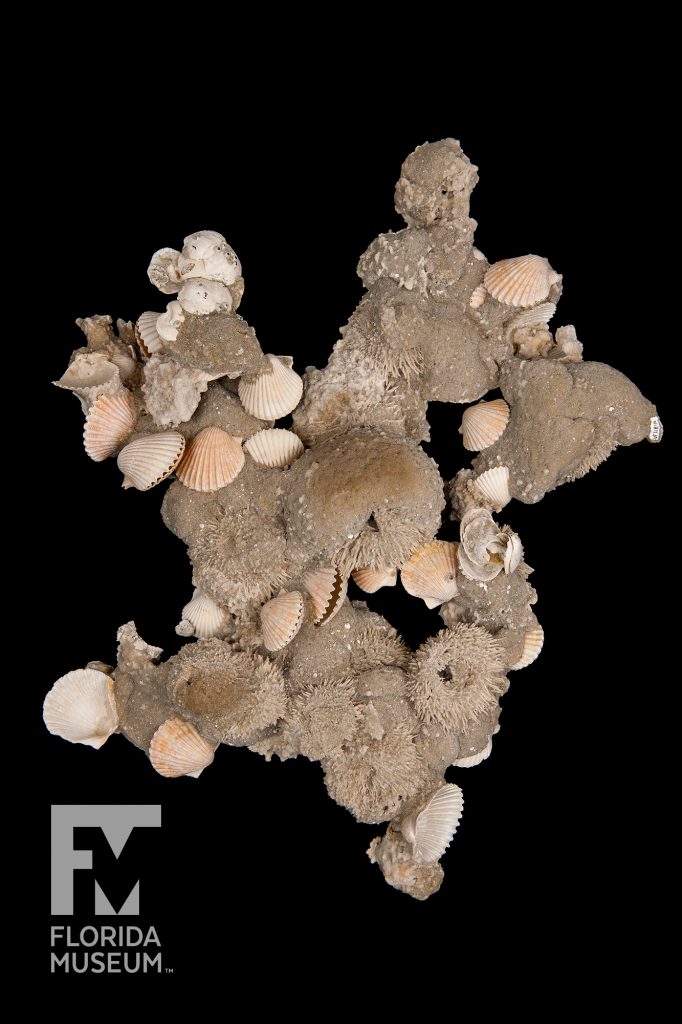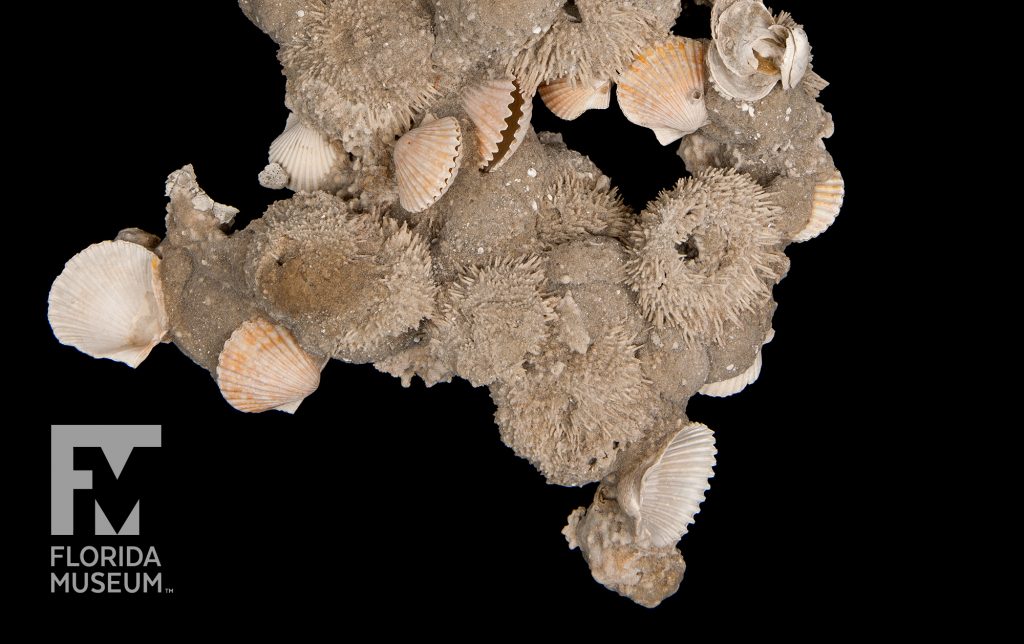This community of bottom-dwelling organisms was rapidly buried, providing a snapshot of marine life not normally seen in the fossil record. Such fossils allow scientists to ask questions that single fossils can’t answer, such as population densities or differences between adults and juveniles.
Summary
Green Sea Urchins (Lytechinus variegatus)
Calico Scallops (Argopecten gibbus)
From Lee Co., Florida
Lived ~120 thousand years ago (late Pleistocene)
Collection
Story
Fossil sea urchins are commonly found in Florida. However, usually we only find fragments or isolated spines. This rock contains tests of sea urchins that have been preserved amazingly well. Note that individual fossils represent complete, articulated tests — and spines are still present. The specimens represent the green sea urchin, Lytechinus variegatus. The rock also contains specimens of the bay scallop, Argopecten gibbus. This rock is of late Pleistocene age and comes from Cape Coral, Florida.
The amazing preservation of these fossils was made possible by rapid recrystallization of calcium carbonate skeletons with the urchin spines still attached. This type of preservation allows researchers to examine the anatomy of species in great detail. Such exceptionally preserved fossils are thus of tremendous importance to paleontologists and geologists by providing unique insights into the animals that lived a long time ago.
Michal Kowalewski
Curator, Invertebrate Paleontology*
Florida Museum of Natural History
Additional Information
- Read: Mollusk graveyards are time machines to oceans’ pristine past
- Read: Phantom fossils: ancient impressions of marine organisms
Exhibit
On display Sept. 23, 2017-Jan. 7, 2018, Rare, Beautiful & Fascinating: 100 Years @FloridaMuseum celebrated the Museum’s rich history. Each Museum collection was asked to contribute its most interesting items and share the stories that make them special. Though the physical exhibit is closed, this companion website remains online, providing an opportunity to experience the Florida Museum’s most treasured specimens.
Exhibit Area: Objects Tell Stories
Theme: Ancient Sea Life
 Want to see more? Explore more than 300 breathtaking color photos of plants, animals, fossils and cultural heritage materials from the Florida Museum of Natural History’s collections in the award-winning book All Things Beautiful available from the University Press of Florida.
Want to see more? Explore more than 300 breathtaking color photos of plants, animals, fossils and cultural heritage materials from the Florida Museum of Natural History’s collections in the award-winning book All Things Beautiful available from the University Press of Florida.
*This title was accurate at the time the exhibit was on display in 2017. Please visit the collection website to verify current staff and student information.

